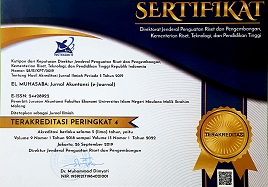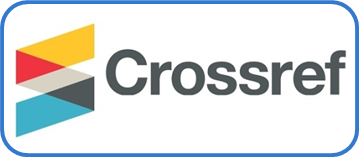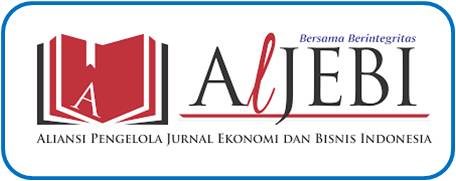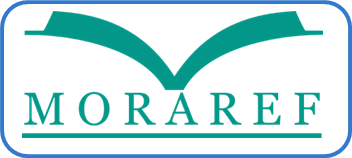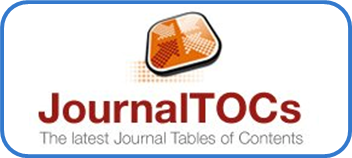MEMAKNAI KONSEP PENDAPATAN PADA KAMPUNG ADAT TUTHUBHADA KABUPATEN NAGEKEO, NTT
Abstract
This studies is a case observe studies with a qualitative descriptive method which aims ti determine the understanding of the that means of the concept of profits in the Tuthubhada conventional village community. The object of his research is the Tuthubhada conventional village and the challenge of this studies is the Chairperson of POKDARWIS and the Tuthubhada traditional village community. resources of data used in this study are primary statistics and secondary records, information collection techniques use documentation and interviews, and statistics evaluation strategies the usage of documentation and interviews, and data analysis strategies is the evaluation strategies used is qulitative analysis with the aid of (1) describing the statistics acquired from interviews associated to traditional village earnings to growth network earnings, (2) describe the information received from interviews related to the which means of income in line with the Tuthubhada customary village network, (three) describe and analyze the which means of earnings seen from informants 1. Mr. Amandus Watu. Informant 2. Mr. Skarias Sela Nima, and informant three. Mrs.Beenadeta Wea. The result confirmed that the Tuthubhada traditional village community understood the that means of profits as 1) the which means of profits as income, 2) the that means of profits as an artwork channel, three) the which means of profits as gratitude.
Keywords
Full Text:
PDFReferences
Dewantara, K. H., & Mail, S. (2011). Deskripsi Kualitatif Sebagai Satu Metode Dalam Penelitian Pertunjukan. Harmonia: Journal of Arts Research and Education, 11(2), 173–179.
Haryanto. (2015). Pengaruh Beban Pajak Tangguhan Terhadap Manajemen Laba. Jurnal Akuntansi, 2, 1–9.
Imaduddin, A. (2017). Spiritualitas dalam konteks konseling. Journal of Innovative Counseling, 1, 1–8.
Kementrian Agama Republik Indonesia. (n.d.). Mushaf Al-Qur’an (S. Exagrafika (ed.)).
Landali, A. (2020). Metafora DOA sebagai makna laba dalam perspektif Islam. 5(2), 116–125.
Maith, H. A. (2013). Analisis Laporan Keuangan Dalam Mengukur Kinerja Keuangan Pada Pt. Hanjaya Mandala Sampoerna Tbk. Jurnal Riset Ekonomi, Manajemen, Bisnis Dan Akuntansi, 1(3), 619–628.
Melang, Y. K., Widyatmaja, I. G. N., & Rahyuda, I. (2019). Strategi Pemerintah Daerah dan Masyarakat dalam Pengembangan Kampung Adat Tutubhada Sebagai Desa Wisata di Kabupaten Nagekeo Provinsi Nusa Tenggara Timur. Jurnal Kepariwisataan Dan Hospitalitas, 3(1), 53–72.
Prihwanto, P. (2021). Seni Rupa sebagai Alternatif Pendekatan dalam Meningkatkan Kecerdasan Spiritual. SOSIOHUMANIORA: Jurnal Ilmiah Ilmu Sosial Dan Humaniora, 7(1), 61.
Rizky, P. H. R. (2019). Makna Pendapatan Dalam Perspektif Pengrajin Kendang di Desa Ngilo-Ilo Kecamatan Slahung Kabupaten Ponorogo. 5(November), 84–93.
Surajiyo. (2015). Keindahan Seni dalam Perspektif Filsafat. Jurnal Desain, 02(03), 161–162. https://journal.lppmunindra.ac.id/index.php/Jurnal_Desain/article/view/581
Suwardjono. (2016). Teori Akuntansi Perekayasaan Pelaporan Keuangan Edisi Ketiga (Edisi Keti). BPFE-YOGYAKARTA.
Syahputra, R. (2017). Analisis Faktor-Faktor Yang Mempengaruhi Pertumbuhan Ekonomi Di Indonesia. 1(2), 183–191.
Tiswiyanti, W., & Sari, Y. (2018). PEDAGANG KAKI LIMA ( DEPAN KAMPUS UNIVERSITAS JAMBI MENDALO ) Abstrak. 3(02), 589–601.
Ubaidillah, A., Mulyani, S., & Effendi, D. E. (2013). MAKNA KEUNTUNGAN BAGI PEDAGANG KAKI LIMA ( Studi pada Pedagang Kaki Lima di Bangsri Jepara ). 14(1), 65–77.
Ulum Ihyaul, A. J. (2018). METODOLOGI PENELITIAN AKUNTANSI KLINIK SKRIPSI 2 (A. M. Publishing (ed.)).
DOI: https://doi.org/10.18860/em.v13i1.12821
Refbacks
- There are currently no refbacks.
Megawati Soekarnoputri Building
Accounting Department, Faculty of Economics
Jln. Gajayana 50 Telp (0341) 558881
E-mail: elmuhasaba@uin-malang.ac.id
Universitas Islam Negeri Maulana Malik Ibrahim Malang
E-ISSN 2442-8922
Member of:
Indexed by:


